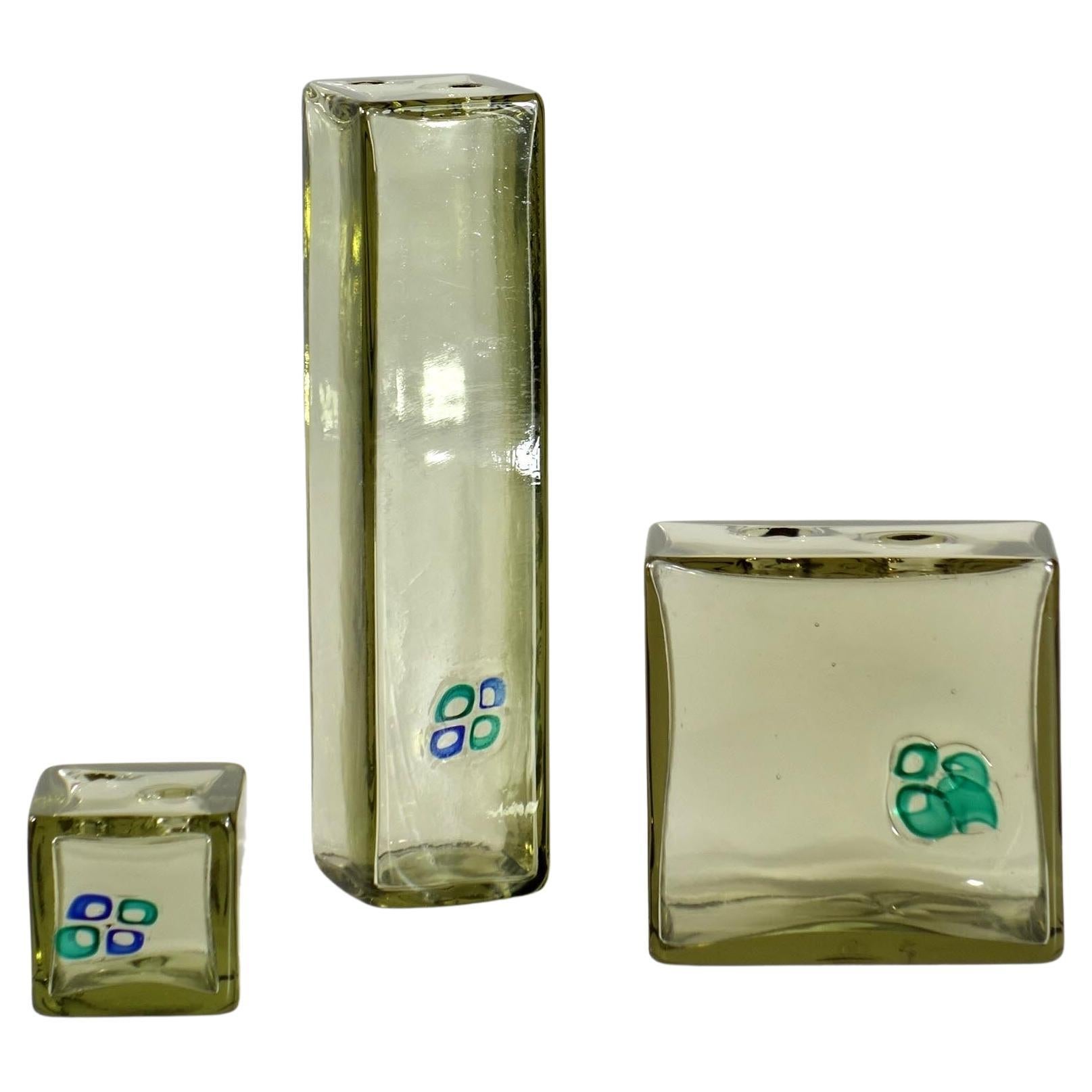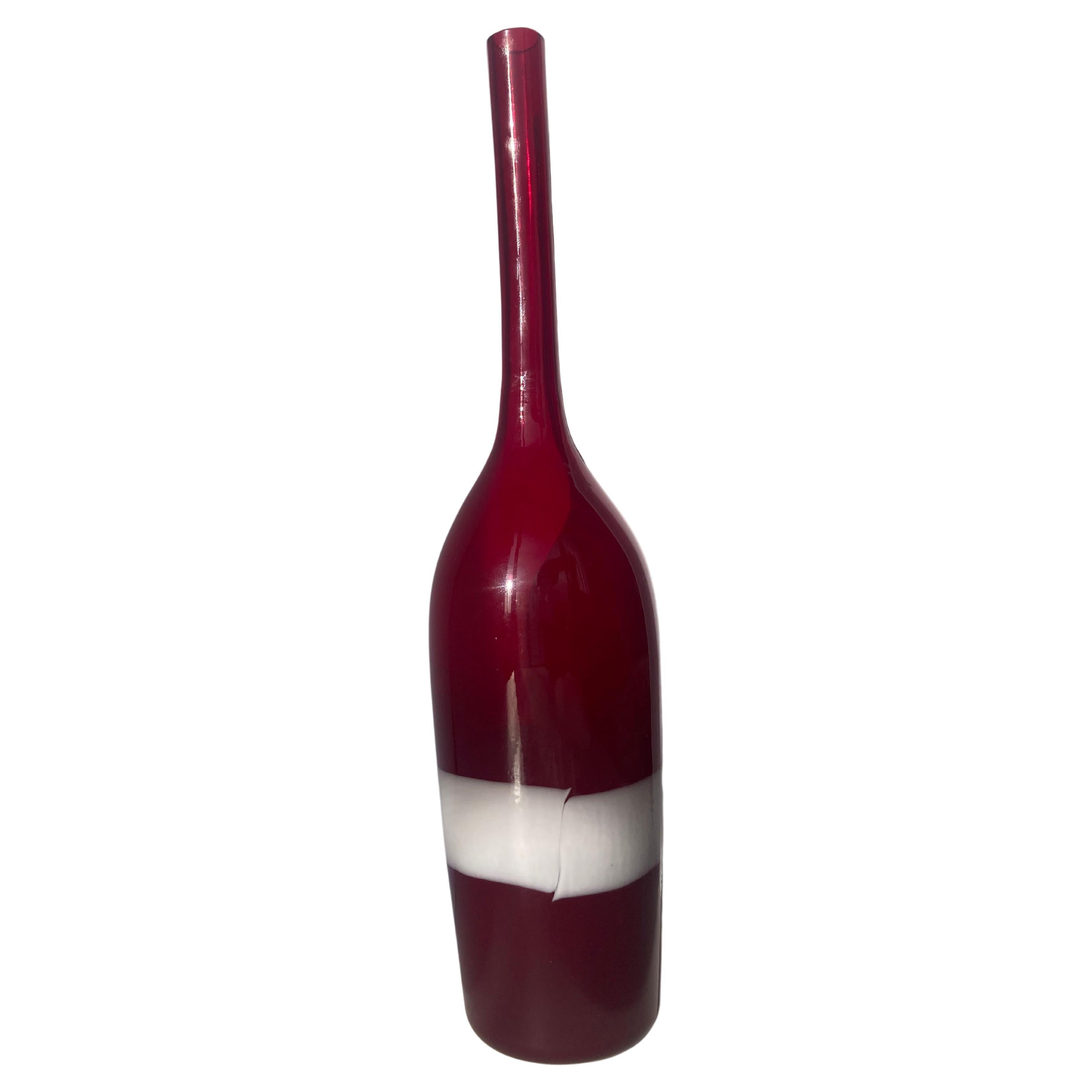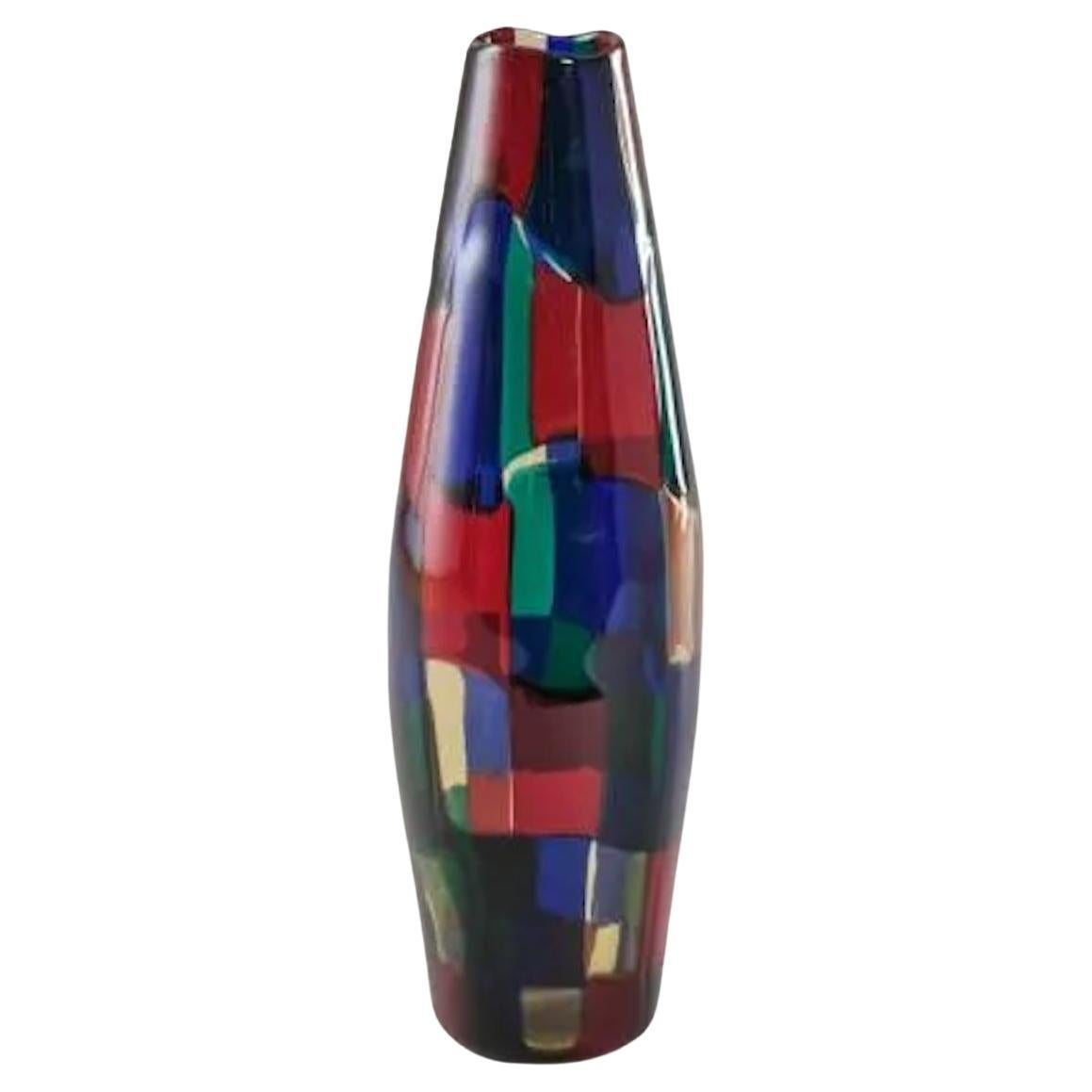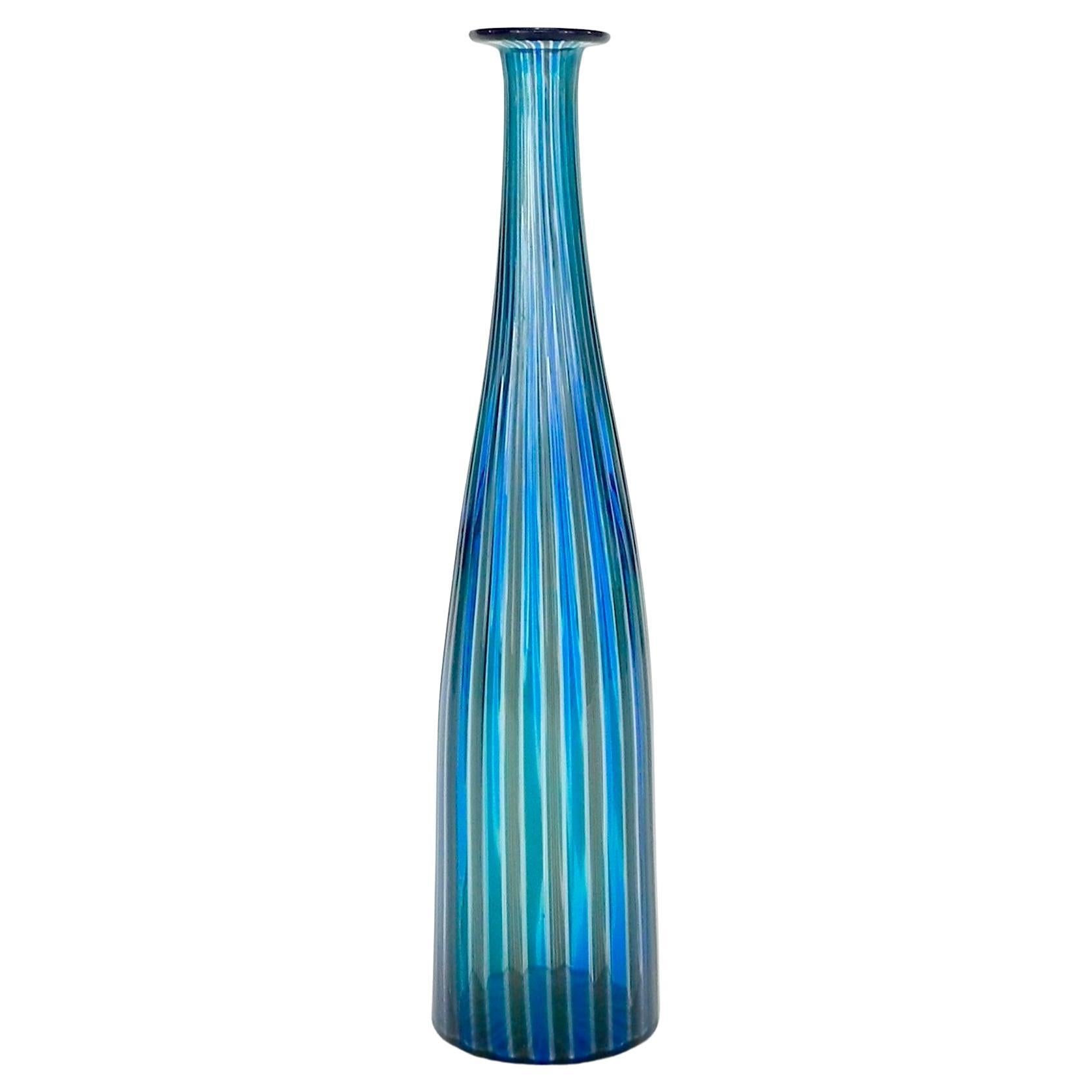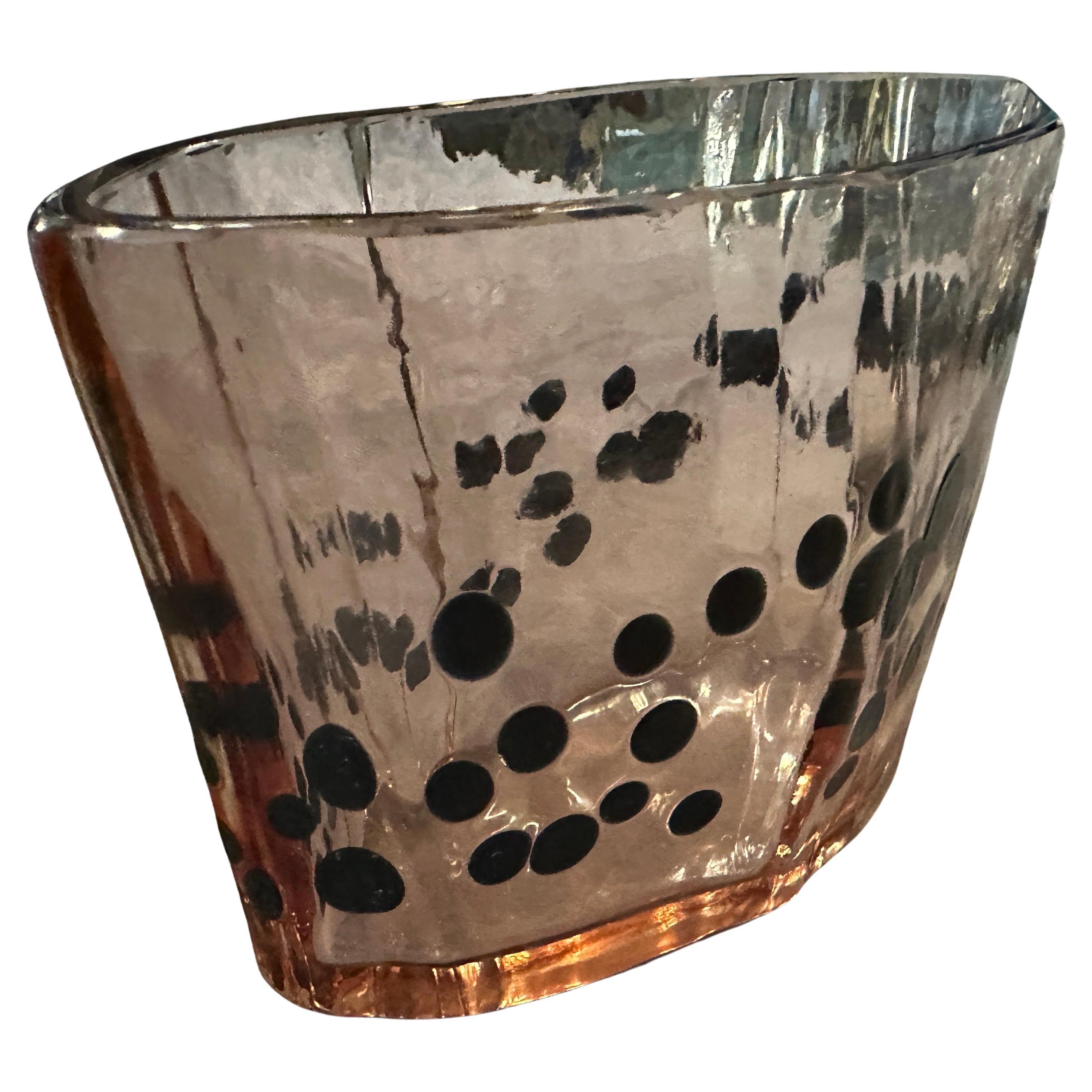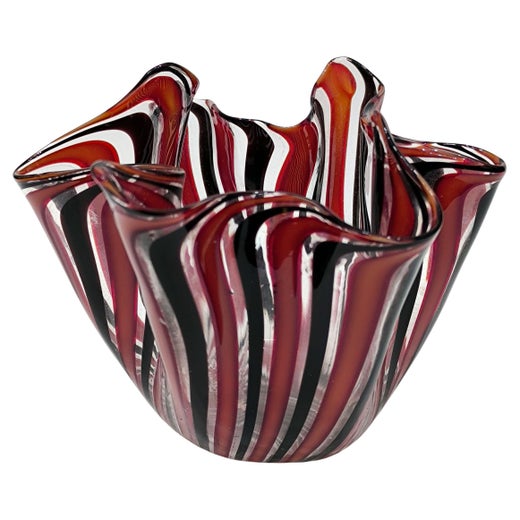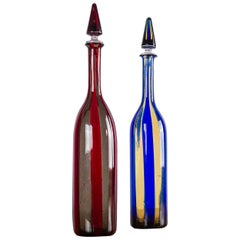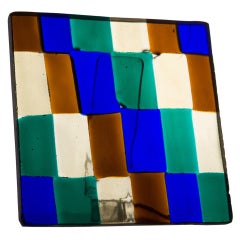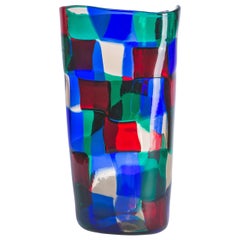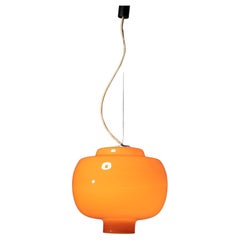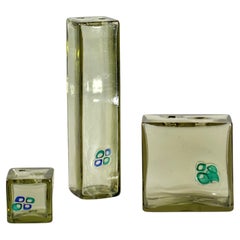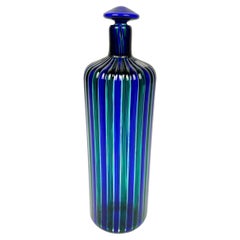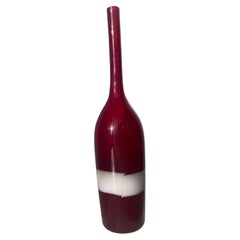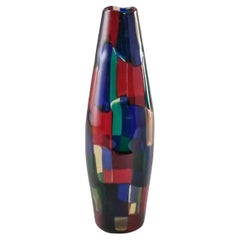Rare Murano Glass Bottle by Fulvio Bianconi for Vistosi, Italy, 1960s
About the Item
- Creator:Fulvio Bianconi (Designer),Vistosi (Manufacturer)
- Dimensions:Height: 14.18 in (36 cm)Diameter: 3.55 in (9 cm)
- Style:Mid-Century Modern (Of the Period)
- Materials and Techniques:
- Place of Origin:
- Period:
- Date of Manufacture:1960s
- Condition:Wear consistent with age and use.
- Seller Location:Milan, IT
- Reference Number:1stDibs: LU945111553473
Fulvio Bianconi
For a range of work that includes everything from illustrating thousands of books and other publications to his role as a visionary glassmaker, Fulvio Bianconi is remembered as one of the most innovative cross-disciplinarian artists of the postwar era.
Born in Ponte di Brenta in 1915, Bianconi showed a prodigious talent for drawing at an early age and, as a teenager, earned money as a portraitist. He also worked as an apprentice decorator in his youth at the Murano glass furnaces, where he first discovered the art of glassmaking.
In 1933, he moved to Milan to pursue a career as a graphic artist, and it was there he met Dino Villani, a painter who had ties to some of Milan’s most prestigious publishing houses and advertising firms. However, at the onset of World War II, Bianconi paused his graphic design ambitions and joined the army. In 1944, he narrowly escaped the infamous Via Rasella Nazi raids in German-occupied Rome.
Following the war, Bianconi went to work designing perfume bottles for the Milan perfume house Giviemme at Venini glassworks, where he worked with glass masters Ermete and Arturo Biassuto. Bianconi became one of Venini’s most influential glass designers — and was appointed artistic director following Carlo Scarpa — known for his bold use of color, modern style and unique, playful designs.
Among Bianconi's most iconic works in glass are the series of glass figures from the Commedia dell’Arte, his remarkably fluid bowls, and the patchwork “Pezzato” technique — his colorful vases created with this technique feature patterns that resemble those of a patchwork quilt. Works made in this fashion caused a sensation at the 25th Venice Biennale in 1950.
Venini co-founder Paolo Venini’s best designs are thought to be his two-color Clessidre hourglasses, produced from 1957 onward, and the Fazzoletto (“handkerchief”) vase, designed with Bianconi in 1949.
Bianconi worked with several other glass studios, including Cenedese in 1954 and Vistosi in 1963, creating decorative vessels, bowls, hourglasses and sculptures. He was also a graphic designer with the Italian publishing house Garzanti for nearly 30 years. Bianconi’s portfolio of graphic design included work for FIAT, Pathé and Pirelli, among others.
Bianconi’s glassworks are held in museum collections worldwide, including London’s Victoria and Albert Museum, the Museum of Modern Art and the Corning Museum of Glass in New York. The artist died in 1996.
On 1stDibs, discover a range of vintage Fulvio Bianconi decorative objects, glassware and lighting.
Vistosi
Demonstrative of a unique marriage between artistry and technical excellence, Vistosi lighting fixtures were born from a rich Italian glassmaking tradition. The prolific glass manufacturer came to prominence after World War II for its modernist lighting designs, and today Vistosi is known for opulent chandeliers, lamps and sconces.
The history of Vistosi reaches as far back as 1640, when the Gazzabin family of Murano opened a furnace for producing Murano glass art. "Vistoso," which was originally a nickname, became part of the family's surname and eventually the name “Vistosi” was used to refer to the family’s glass creations.
Vistosi would be recognized by the glassmakers’ guild in Murano during the late 18th century — with Gio-Batta Vistosi becoming head of the guild — but Napoleon dissolved the Venetian state and closed the region’s glass factories by 1807. The modern iteration of the Vistosi company was founded in Murano in 1945 by Guglielmo Vistosi, a Gazzabin family heir.
During the 1950s, Vistosi's grandchildren, Gino and Luciano Vistosi, began specializing in lighting. In the 1960s and ‘70s, the company worked with renowned Italian furniture designers like Adalberto Dal Lago, Ettore Sottsass and Gae Aulenti. One of Vistosi's most famous collaborations was with Italian architect and designer Angelo Mangiarotti. In 1967, Mangiarotti designed a modular crystal-hook lighting system called Giogali that has enjoyed popularity and acclaim to this day.
In 1989, Vistosi was taken over by businessman Giancarlo Moretti, who had an extensive background in the lighting industry. Moretti's son, Matteo Moretti, reinvigorated the business with a series of new design collaborations in 1993. Some of the most notable partnerships included Chiaramonte and Marin, Mauro Olivieri and Michele De Lucchi.
Vistosi has participated in every Euroluce showcase since the lighting exhibition began in 1976. In 2005, the company won the ADI Design Index award for Mangiarotti's Giogali system. In 2007, Vistosi won the Eurispes award and participated in a Compasso d'Oro competition.
Today, Vistosi is still a leader in the lighting industry, shifting to LED and creating new types of lead-free crystal glass for its stunning range of lighting fixtures.
Find a collection of vintage Vistosi lighting and decorative objects on 1stDibs.
- ShippingRetrieving quote...Shipping from: Milan, Italy
- Return Policy
More From This Seller
View AllVintage 1950s Italian Vases
Murano Glass
Vintage 1960s Italian Sculptures
Glass
Vintage 1950s Italian Vases
Murano Glass
Vintage 1960s Italian Chandeliers and Pendants
Murano Glass
Vintage 1970s Italian Vases
Murano Glass
Vintage 1950s Italian Jars
Murano Glass
You May Also Like
Vintage 1960s Italian Mid-Century Modern Vases
Glass
Vintage 1980s Italian Mid-Century Modern Bottles
Murano Glass
Vintage 1950s Italian Modern Glass
Glass
Vintage 1950s Italian Mid-Century Modern Vases
Glass
Vintage 1980s Italian Post-Modern Vases
Glass
Mid-20th Century Italian Modern Vases
Murano Glass
